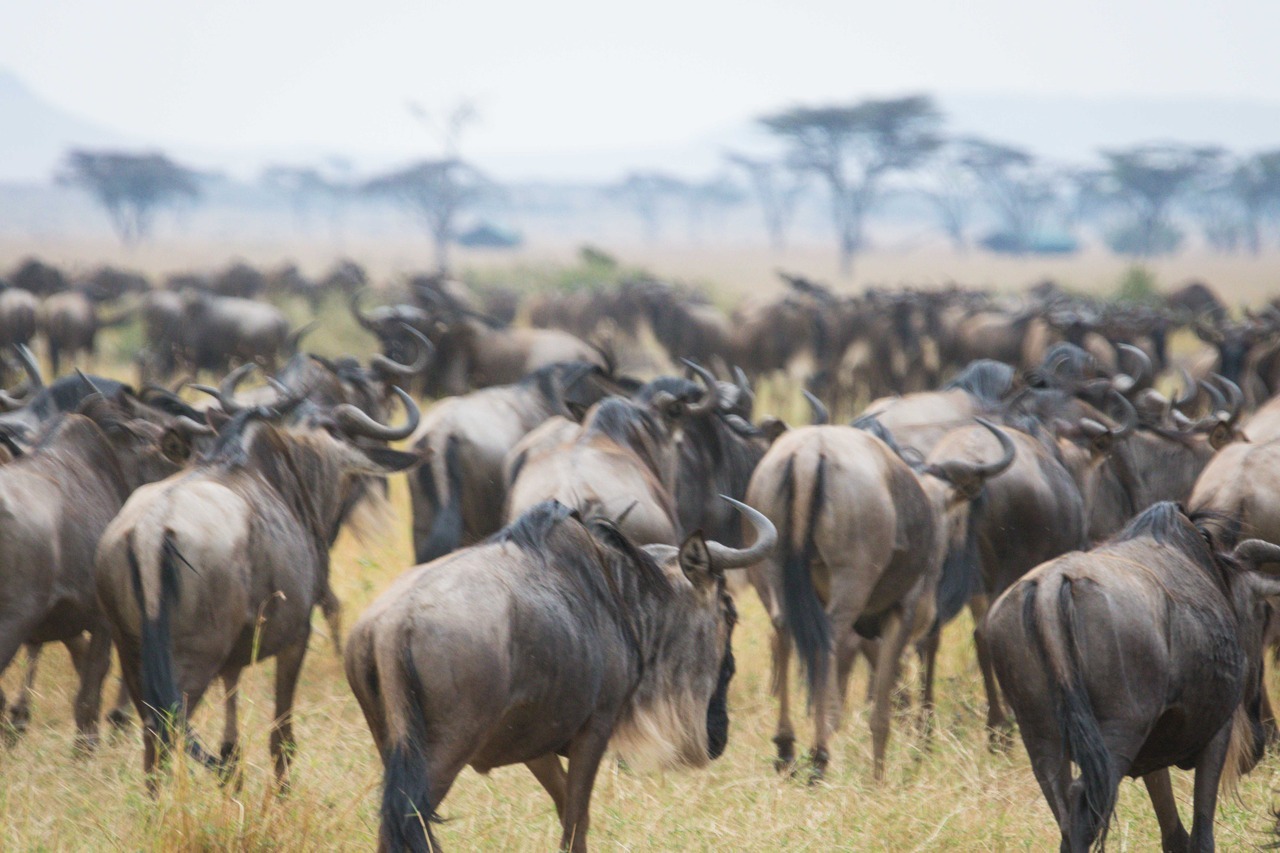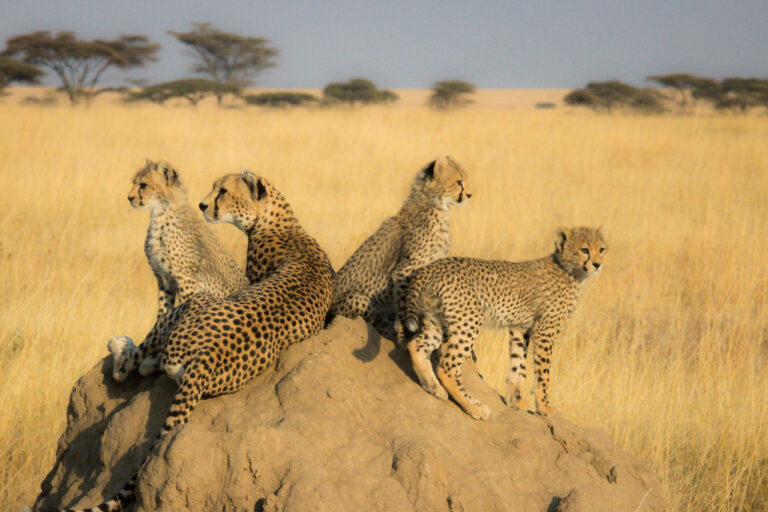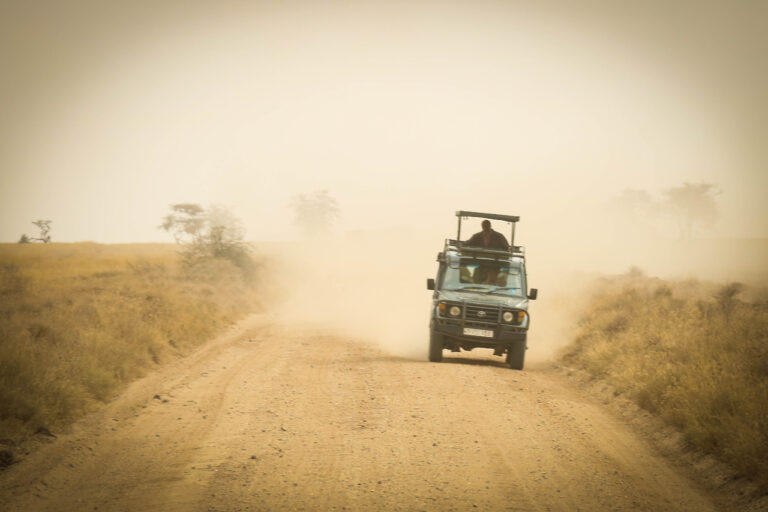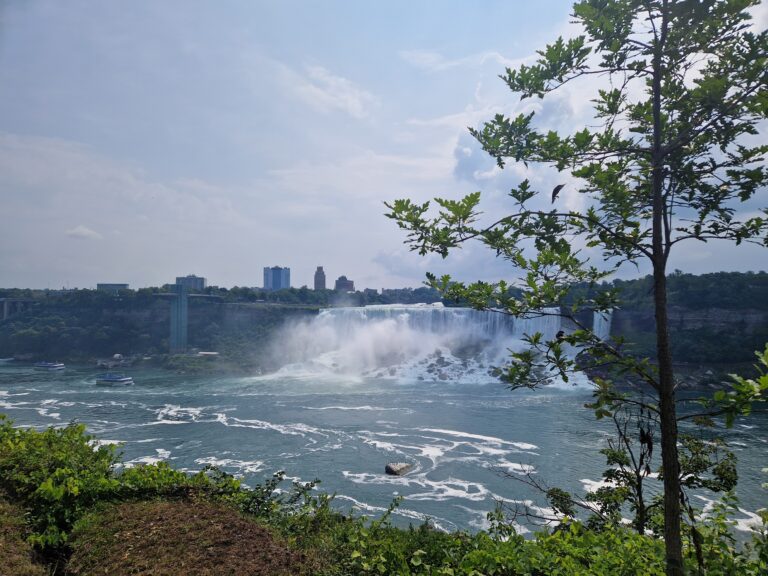On Safari: The Migration
On the third morning, we left the Namiri Plain for the Saronara airstrip where we’d entered the Serengeti a few days before. We piled into the Cessna Caravan and climbed away from the plains, the yellow grasses dotted by deep green acacia trees becoming like an impressionist painting laid wide out towards the horizon. The landscape below us we came to know as one teeming with wildlife, a place that one should not stray even a few feet from the car at the risk of coming face to face with something with much larger teeth than you. But now, from a few thousand feet, it was peaceful. You could make out the shambas below which dotted the horizon, their circular shape and scattered huts making up the living unit of the Maasai who inhabited the outskirts of the national park.
The flight was a short one. In only about 30 minutes we began our descent into the Kogatende airstrip on the Kenya/Tanzania border. The plane’s wheels touched down and sped along for a few hundred yards kicking up a cloud of dirt. Our new guides greeted us with wide smiles and friendly faces. After a quick stop at park headquarters to check us in while we waited in the car, we were off on our way to camp, a handful of semi-permanent tents set up near the Mara River for the migration season. As our cars rumbled down the dirt path towards camp we parted skittish groups of wildebeest. They seemed to always wait for the very last second to decide which way they’d run, and when the car was finally upon them they seemed offended and surprised that you didn’t stop. It was a dance the driver seemed accustomed to and it barely slowed him down. The wildebeest seemed formidable creatures, almost like lean and quick bulls, with their sharp horns and stocky figures giving the impression of strength, but this turned out to be a complete deception. The wildebeest were creatures of extreme caution and fear. A single person walking among a herd of thousands would cause them to create a wide circular berth so as to leave a hundred yards of space on every side. These creatures we learned were the most successful of all antelopes at survival and procreation in the whole of Serengeti. Their caution to predators was evident in that we never got close enough to touch one, even though we were never far from thousands of them.
By the hundreds of thousands, these creatures venture many miles north each summer to follow the rains which ultimately provide them their food. Our goal was to follow them in this journey… and by good planning by our guides, we were not unsuccessful. We arrived in the northern Serengeti along the Mara River among a herd which reminded me of what buffalo in the old west must have been like. Up close the herd certainly made an impressive sight, but the really amazing thing as you looked out across the plains to the horizon it just became a solid brown haze until they disappeared. I’d never seen anything remotely like it. It was as if we were looking at the night sky and the wildebeest were the stars. They moved not as individuals, but as if they were one big family. If one moved, others followed. If one ran, several others became curious and alarmed. These were not individual creatures, they were all one.
During the early hours of our second day at camp, we got word that excitement was afoot on the Mara river. One of the main reasons people come to this area is to witness a ‘crossing’. This is when a herd decides that the rains (and thus, food) are better on the opposite side of the Mara and to cross is the only option for survival. The guide’s radio reported a large herd seemed to be contemplating this, so we raced down to the riverbank. Sure enough, a herd of thousands was standing on the shore of the Mara, obviously debating a crossing of the crocodile and hippo filled rushing waters. It would only take one brave leader to go… and after that, thousands would follow.
After waiting for several minutes and deciding this would likely not happen today, one finally went. And then all behind him. Before we knew it the entire herd was in action and thousands were making their way down into the river. What previously appeared as skittish and cowardly creatures were now jumping to their peril into a crocodile infested river to get to a better feeding ground on the other side. Ever hear that saying ‘well if your friend jumped off a bridge does that mean you would too?”… absolutely, says the wildebeest.
It left an impression on me that although these creatures were so silly and awkward that they have been the most successful of all the creatures in the Serengeti in staying alive and looking after one another… What beauty they created as a unit. What calm they showed as they created a one hundred yard berth around us or a hyena. This creature knew its place and was all the better for it. The silly sounding bleat that they let out by the hundreds played over and over in my head the next few nights as we settled into camp. The survival story of this this very quick and herd-like animal also told lessons. And as night fell on the Serengeti, I listened to the sounds; the distant bleats of the sleepy wildebeest, the mesmerizing chirps of the crickets, but also the silence. The silence that I expected based on a few nights before would be interrupted with a lion’s roar… but tonight this was not the case. I went to bed in peace, thinking of the wildebeest making his dash across the river… his family of thousands parting like the Red Sea as we drove down the road. Although we had not left the Serengeti, what a different world this was.







